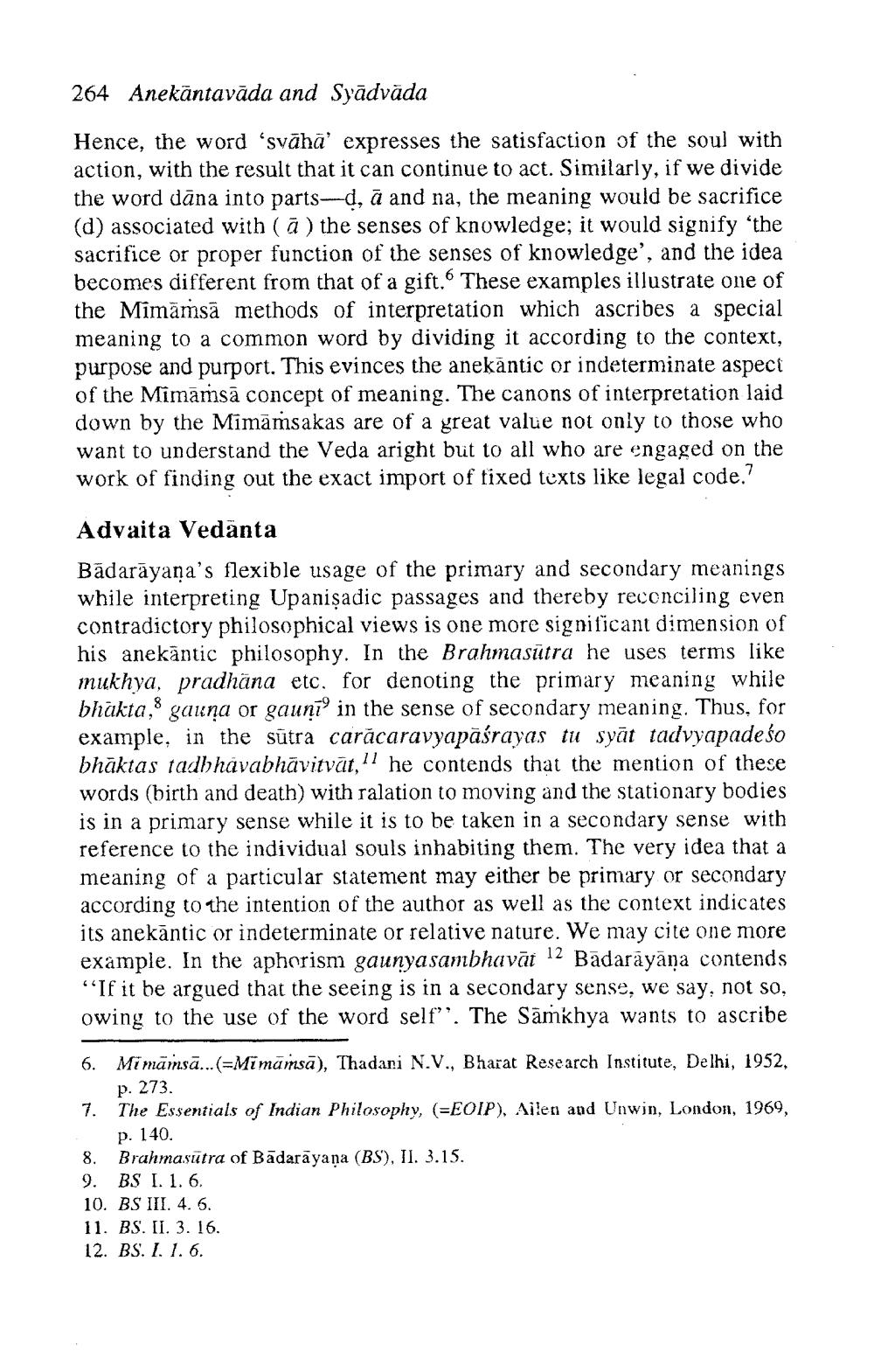________________
264 Anekāntavāda and Syādvāda
Hence, the word 'svāhā' expresses the satisfaction of the soul with action, with the result that it can continue to act. Similarly, if we divide the word dana into parts-d, ā and na, the meaning would be sacrifice (d) associated with ( a ) the senses of knowledge; it would signify the sacrifice or proper function of the senses of knowledge', and the idea becomes different from that of a gift. These examples illustrate one of the Mimämsä methods of interpretation which ascribes a special meaning to a common word by dividing it according to the context, purpose and purport. This evinces the anekāntic or indeterminate aspect of the Mimamsā concept of meaning. The canons of interpretation laid down by the Mimāmsakas are of a great value not only to those who want to understand the Veda aright but to all who are engaged on the work of finding out the exact import of fixed texts like legal code.?
Advaita Vedanta
Bādarāyana's flexible usage of the primary and secondary meanings while interpreting Upanisadic passages and thereby reconciling even contradictory philosophical views is one more significant dimension of his anekāntic philosophy. In the Brahmasūtra he uses terms like mukhya, pradhana etc. for denoting the primary meaning while bhakta, gauna or gaunī' in the sense of secondary meaning. Thus, for example, in the sūtra carăcaravyapaśrayas tu syāt tadvyapadešo bhāktas tadh havabhävitvät," he contends that the mention of these words (birth and death) with ralation to moving and the stationary bodies is in a primary sense while it is to be taken in a secondary sense with reference to the individual souls inhabiting them. The very idea that a meaning of a particular statement may either be primary or secondary according to the intention of the author as well as the context indicates its anekāntic or indeterminate or relative nature. We may cite one more example. In the aphorism gaunyasambhavāt 12 Badarāyāna contends “If it be argued that the seeing is in a secondary sense, we say, not so, owing to the use of the word self”. The Samkhya wants to ascribe
6. Mi mamsā... (=Mimamsā), Thadani N.V., Bharat Research Institute, Delhi, 1952,
p. 273. 7. The Essentials of Indian Philosophy, (=EOIP), Ailen and Unwin, London, 1969,
p. 140. 8. Brahmasutra of Bādarāyana (BS), II. 3.15. 9. BS I. 1. 6. 10. BS III. 4. 6. 11. BS. II. 3. 16. 12. BS. 1. 1.6.




